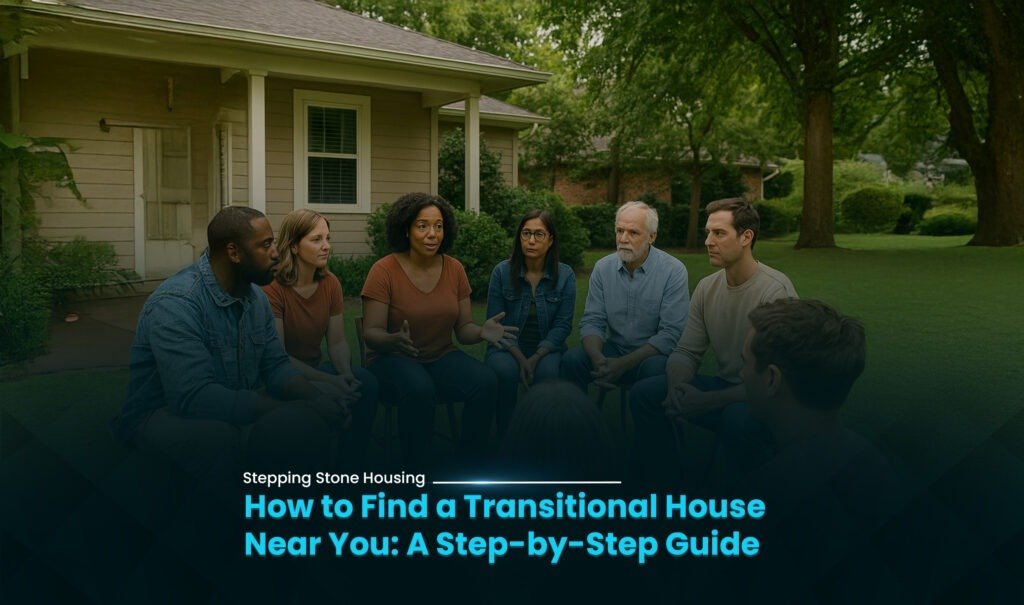How to Find Transitional Housing Near You: Complete Step-by-Step Guide
Initially, experiencing housing instability creates incredible stress for countless individuals nationwide. Furthermore, many people currently face this overwhelming challenge in their lives. However, a clear pathway to stability exists through structured support programs. Moreover, transitional housing offers crucial stepping stones toward permanent housing solutions. Additionally, these programs provide temporary shelter alongside vital support services. Nevertheless, finding the right program often feels overwhelming for applicants. Therefore, this guide offers clear, step-by-step approaches to success. Consequently, you will locate transitional housing options near your location.
Understanding Transitional Housing Programs and Their Purpose
Initially, transitional housing programs provide temporary, supportive accommodation for vulnerable populations. Furthermore, these programs aim to help people move forward systematically. Specifically, individuals transition from homelessness or crisis situations effectively. Subsequently, participants move toward stable, permanent housing arrangements through structured support. Additionally, these programs typically maintain specific time limits for residency. Moreover, programs offer comprehensive ranges of essential services to residents. Notably, services include case management and life skills training components. Ultimately, the primary goal focuses on achieving complete self-sufficiency.
Step 1: Assess Your Immediate Needs and Current Situation
First, you must understand your current situation before beginning your search. Initially, determine whether you need immediate emergency shelter assistance right now. If so, prioritize emergency shelter needs before exploring transitional options. Next, identify your specific circumstances and unique requirements clearly. Specifically, consider whether you are a veteran seeking specialized services. Additionally, determine if you are a domestic violence survivor needing safety. Furthermore, assess whether you have special needs requiring accommodations. Consequently, identifying these factors will narrow your search parameters effectively. Importantly, different programs serve different populations with specialized services.
Step 2: Utilize Online Resources for Transitional Housing Research
Fortunately, many online tools exist to help locate housing options. Moreover, these digital resources help locate transitional housing opportunities efficiently. Additionally, these platforms serve as excellent starting points for research.
HUD.gov’s Find Shelter Tool for Housing Resources
Initially, the U.S. Department of Housing and Urban Development offers comprehensive resources. Specifically, HUD provides a “Find Shelter” tool with housing information. Furthermore, you can search by specific location parameters easily. Additionally, the tool lists shelters, food pantries, and health clinics. Moreover, it connects users with Continuum of Care providers effectively. Notably, CoCs are local planning bodies coordinating homeless services. Consequently, they often maintain lists of transitional housing programs.
Homeless Shelter Directories and Comprehensive Websites
Subsequently, several websites list homeless shelters and transitional housing options. Specifically, websites like HomelessShelterDirectory.org provide state-by-state comprehensive listings. Additionally, ShelterListings.org offers detailed program information by location. Furthermore, The Salvation Army maintains a searchable location database. Moreover, you can search by zip code for nearby services. Ultimately, these directories offer contact information and program details.
Step 3: Contact Local Community and Social Services
Initially, local agencies provide invaluable resources with current information. Furthermore, these organizations maintain up-to-date information about local options. Additionally, they often know about transitional housing availability immediately.
Your Local 211 Service for Immediate Assistance
First, dialing 211 connects you to local social services instantly. Moreover, this free helpline operates 24/7 in most U.S. areas. Additionally, trained operators provide referrals for emergency housing assistance. Furthermore, they list transitional housing programs in your area. Moreover, they connect you to other essential services systematically. Therefore, this represents a vital first point of contact.
Community Action Agencies Nationwide
Subsequently, Community Action Agencies exist nationwide serving low-income individuals. Furthermore, these agencies often offer comprehensive housing assistance programs. Additionally, they might operate transitional housing programs directly. Moreover, they connect you to other local resources effectively. Therefore, search online for your local CAA contact information.
Local Homeless Service Providers and Direct Contacts
Next, contact local homeless shelters directly for referral information. Additionally, these organizations often maintain comprehensive referral systems. Furthermore, they know about current transitional housing availability. Moreover, they work closely with transitional housing programs daily. Consequently, their staff can guide you through application processes. Additionally, they provide immediate assistance when necessary.
County Welfare Departments and Social Services
Finally, your local county welfare department can provide assistance. Additionally, social services agencies administer various assistance programs. Furthermore, they often maintain information about housing options. Moreover, they assess your eligibility for specific programs. Consequently, they refer you to suitable transitional housing programs.
Step 4: Explore Specialized Transitional Housing Programs
Initially, remember your specific needs identified in Step 1. Furthermore, many programs cater to particular demographic groups exclusively.
Transitional Housing for Veterans and Military Personnel
First, veterans can contact the National Call Center for assistance. Specifically, call 1-877-4AID-VET (1-877-424-3838) for free confidential support. Additionally, they connect veterans to VA housing programs directly. Furthermore, local veteran service organizations provide additional assistance.
Transitional Housing for Domestic Abuse Survivors
Initially, if you survived domestic abuse, safety remains paramount. Therefore, contact local domestic violence shelters or hotlines immediately. Additionally, they provide immediate safe housing arrangements. Furthermore, they maintain information about survivor-specific transitional housing. Moreover, they offer counseling and legal support services.
Youth and Young Adults Seeking Housing Assistance
Subsequently, youth experiencing homelessness have specific resources available. Therefore, contact the National Runaway Safeline for assistance. Specifically, call 1-800-RUNAWAY (1-800-786-2929) for support and referrals. Additionally, they connect you to runaway and homeless youth programs. Furthermore, these programs include transitional living facilities.
Individuals with Special Needs Requiring Accommodations
Next, if you have disabilities, seek accessible housing options. Therefore, contact your local disability services office for referrals. Additionally, they might know about specialized transitional housing programs. Furthermore, these programs offer tailored support addressing specific needs.
Transitional Housing for Those in Recovery Programs
Finally, individuals recovering from addiction can access sober living homes. Moreover, these represent specialized types of transitional housing programs. Therefore, search for “sober living” or “recovery housing” nearby. Additionally, your treatment provider might offer helpful recommendations.
Step 5: Understand the Application Process for Transitional Housing
Initially, once you find potential programs, understand their application requirements. Furthermore, application processes vary but contain common essential elements.
Gather Necessary Documents for Your Application
First, prepare important paperwork before beginning application processes. Additionally, you will likely need current photo identification documents. Furthermore, proof of income is often required for eligibility. Moreover, documentation of homelessness or crisis is essential. Additionally, medical records might be necessary for specialized programs. Consequently, having these ready speeds up the entire process.
Complete Application Forms Thoroughly and Honestly
Next, each program maintains specific application requirements. Therefore, fill out applications completely and honestly always. Additionally, provide accurate information in all sections. Furthermore, incomplete applications cause unnecessary delays in processing.
Prepare for Interviews and Assessment Meetings
Subsequently, interviews are common components of application processes. Moreover, they help programs assess your specific needs accurately. Additionally, they determine your suitability for their program. Therefore, prepare to discuss your situation openly and honestly. Furthermore, share your goals for stability and self-sufficiency clearly.
Be Patient and Follow Up Consistently
Finally, finding available spots can take considerable time. Additionally, programs often maintain extensive waiting lists currently. Therefore, remain patient but persistent throughout the process. Furthermore, follow up on your application status regularly. Moreover, maintain consistent contact with program staff members.
Step 6: What to Expect in Transitional Housing Programs
Initially, understanding program expectations helps you prepare for success. Furthermore, transitional housing programs maintain specific rules and guidelines. Additionally, these rules ensure safe and structured environments. Moreover, participation in services is usually mandatory for residents. Specifically, this includes case management and educational workshops. Therefore, the goal is preparing you for independence. Consequently, you will work toward securing permanent housing.
Step 7: Maintaining Progress Towards Permanent Housing Goals
Initially, transitional housing serves as a stepping stone toward independence. Therefore, while residing there, focus on your established goals. Additionally, engage actively with all support services provided. Furthermore, build your life skills through program participation. Moreover, work consistently toward achieving financial stability. Additionally, your case manager will help with housing navigation. Furthermore, they assist with your transition to permanent housing. Ultimately, your success represents their primary priority.
Conclusion: A Clear Path to Stability with Transitional Housing
Finally, finding transitional housing requires dedicated effort and persistence. However, many valuable resources are available to assist you. Therefore, by following these steps, you can navigate successfully. Initially, assess your needs and circumstances thoroughly. Next, use online tools for comprehensive research. Additionally, contact local services for personalized assistance. Furthermore, explore specialized programs matching your needs. Moreover, understand application processes before beginning. Ultimately, transitional housing offers vital opportunities for stability. Additionally, it provides safe spaces for healing and growth. Furthermore, it offers crucial support during vulnerable times. Moreover, it empowers you to rebuild your life systematically. Consequently, it guides you toward a stable, independent future.





